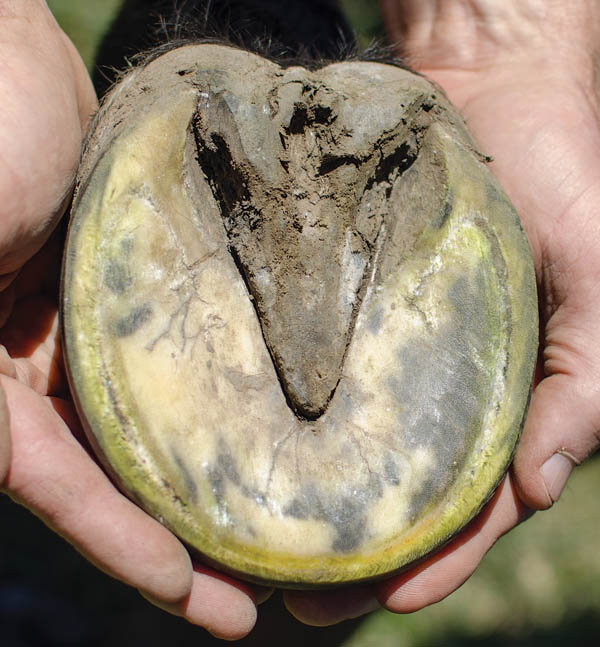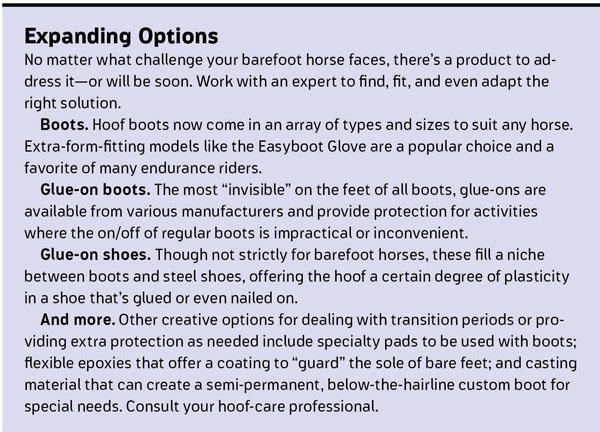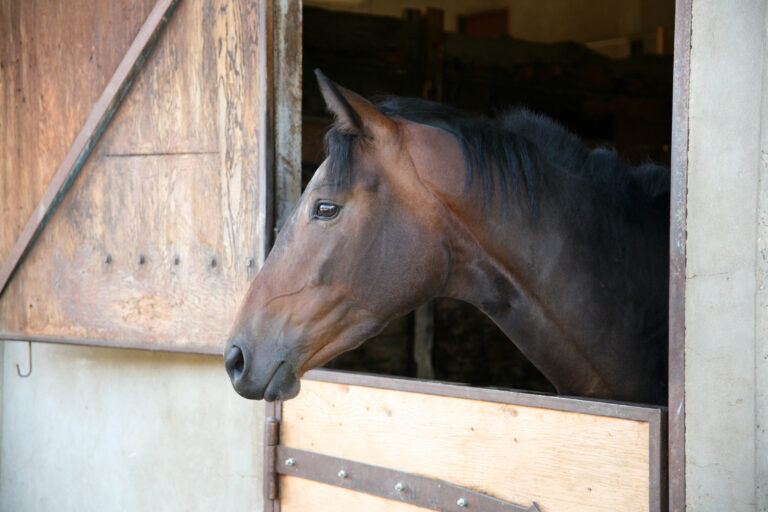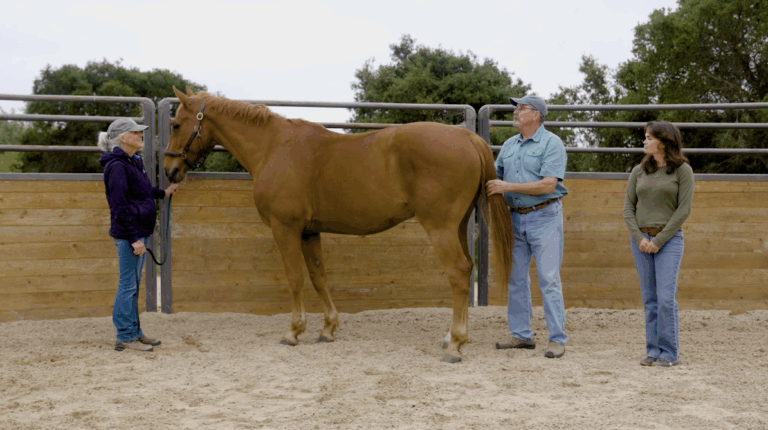Going barefoot can be a healthful alternative to shoeing for many horses. Here’s the latest on what it takes to give your horse his best chance of succeeding without shoes.

Find the right trimmer. A barefoot horse needs trimming every 4 to 6 weeks, and a traditional pasture trim or prep-for-shoeing isn’t the same as a trim based on natural hoof dynamics.
“Do your homework before selecting who cares for your horse’s feet,” advises Pete Ramey, a farrier and one of the world’s most respected hoof-care practitioners. The American Hoof Association (americanhoofassociation.org), a group Ramey helped found, certifies peer-reviewed practitioners. He also recommends Pacific Hoof Care Practitioners (pacific hoofcare.org) and the Equine Sciences Academy (equinesciencesacademy.com).
Farriers interested in finding out more about natural-trim techniques can find a wealth of free information at Ramey’s own Web site, hoofrehab.com.
Boot up. Bare feet typically improve over time; modern hoof boots can help your horse stay comfortable during the transition from shod to barefoot.
They also provide added protection whenever needed. Boots and an expanding array of other support products (see box) are helping to make the barefoot option workable for more horses.
Ramey cautions that boots must fit correctly, however, and there’s definitely a learning curve involved. So be sure to work with a knowledgeable expert in booting your horse.

Manage properly. To maximize the health of your barefoot horse’s feet, give him as much turnout as possible and maintain him on a low-sugar diet. These management strategies, beneficial for any horse, are essential for barefoot ones.
Hooves adapt to the terrain they deal with, so it’s best if your horse can live on the type of footing you typically ride on.
To learn more about how nutrition affects hoof health, see “Feeding the Hoof” at Ramey’s Web site.
Be patient, and realistic. Not all horses can be ridden completely barefoot, and a mostly barefoot lifestyle requires commitment and a consistent approach.
Take the time needed to educate yourself, and always work with a competent hoof-care professional.


![[Aggregator] Downloaded image for imported item #35942](https://s3.amazonaws.com/wp-s3-horseandrider.com/wp-content/uploads/2025/10/20105738/EDCC-Unbranded-14-300x200-1.jpeg)

